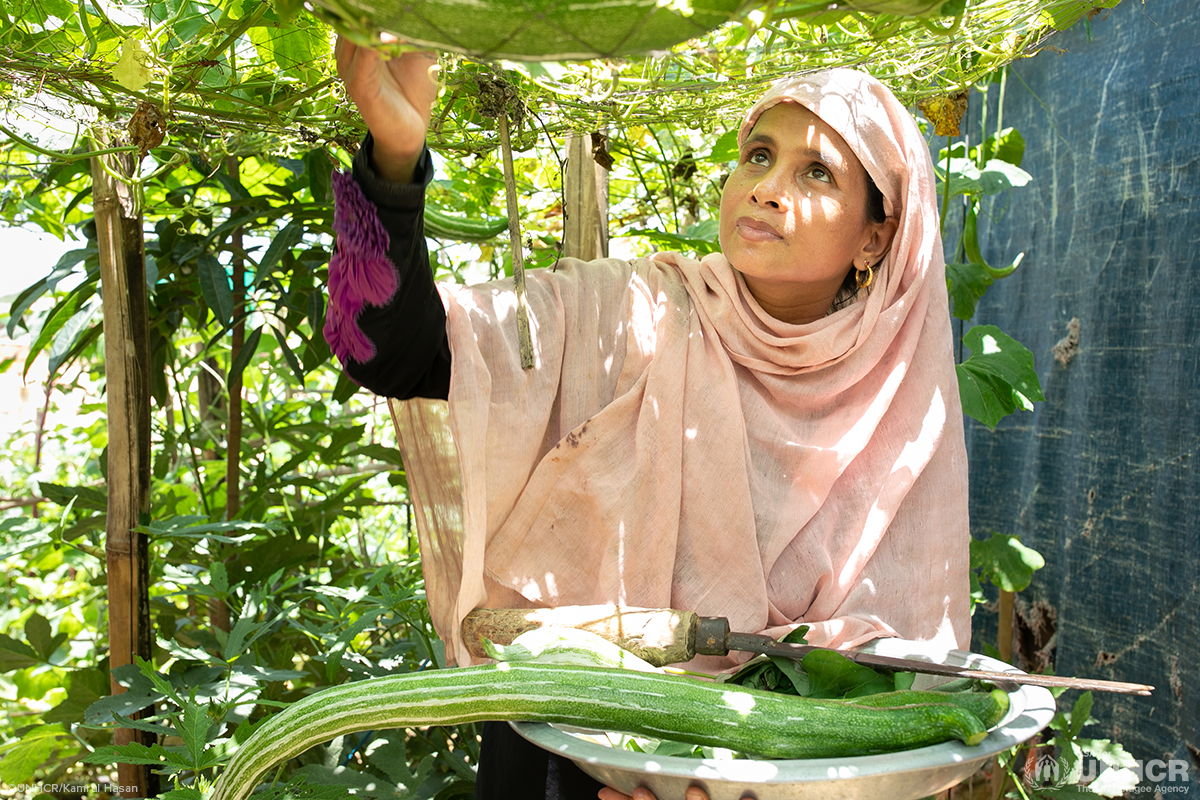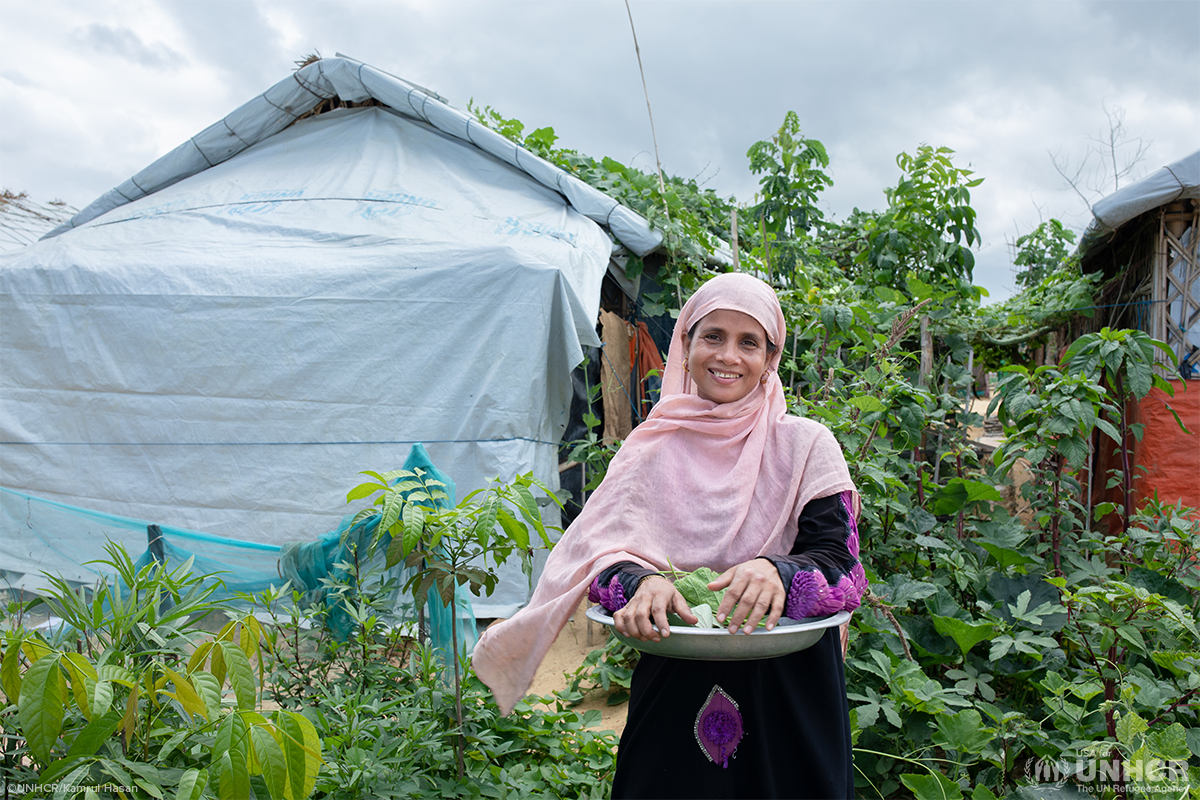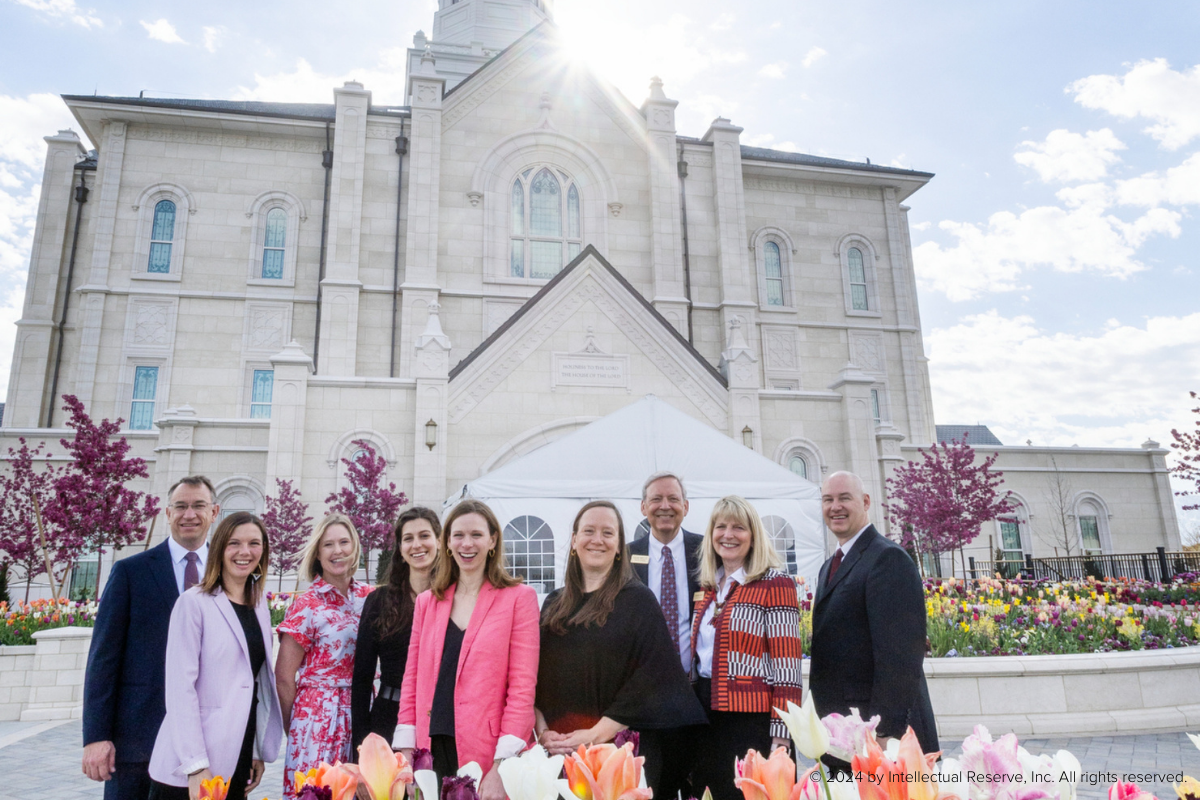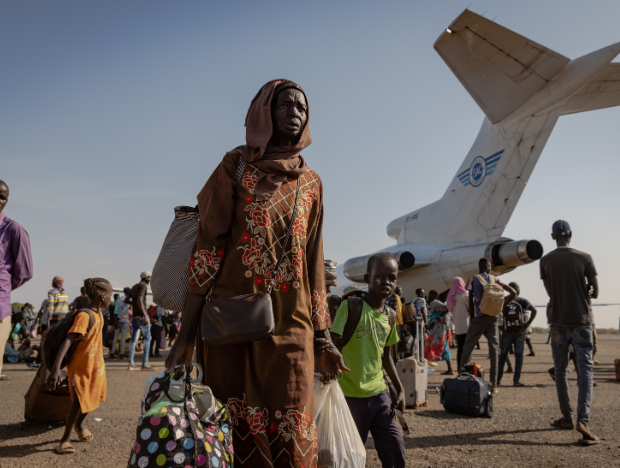Going green in a Rohingya refugee camp

Sahera smiles as she sees green sprouts emerging from the soil. For her, it’s more than just the promise of fresh vegetables for her three children. It’s a reminder of home.
“We had a lot of land back in Myanmar,” she explains. “Here we only have a small plot.”
But that small plot is making a big
difference for her family.
Like most Rohingya refugees who arrived in Bangladesh in August 2017, fleeing persecution and violence, Sahera was a farmer. When she and her children, along thousands of other Rohingya, took shelter in Kutupalong— which quickly became the world’s largest refugee settlement — there was very little space to cultivate crops.
However, through a unique project created by UNHCR and its partner BRAC, women like Sahera are able to plant, harvest, and enjoy their own garden-grown produce again.
“UNHCR and BRAC gave us these plants to take care of, as well as seeds, and bamboo that we used to create shade,” she says. “We take care of the plants every day, and my children help water them.”
The project began in 2018 with 100 farmers. One of its main goals was protecting the environment by reducing the effects of deforestation, which has accelerated with so many families living in so compact of an area, as well as by providing plants to stabilize the soil and reduce erosion.
UNHCR did extensive research to select seasonal crops and plants that would help restore the depleted land around Kutupalong, while also providing refugee families with healthy and delicious vegetables.
In 2018, UNHCR helped farmers cover 43.5 hectares (approximately 107 acres) with trees, shrubs, herbs, and other crops. Female farmers like Sahera were given priority, in order to help meet the needs of their families.

Today, after eight months of planting, the project has been judged a success by all involved.
The greenery around the settlement is bright and vibrant, soil erosion has been reduced and Rohingya families are enjoying the bounty.
“My children get excited to see the vegetables. It reminds us of our farm back home,” Sahera explains. “These vegetables taste really good, so I don’t have to buy any from the market.”
Sahera’s garden includes spinach, gourd, and pumpkin – a particular favorite of her youngest daughter, Fatema. The family’s harvest has been so plentiful that they can’t use it all within their small household.
“Not only do we have vegetables for ourselves, we often share them with our neighbors,” she says. “If we have leftover produce, we sell it to nearby shops.”
Sahera’s garden might not be as big as the farm she was forced to flee, but it’s full of possibilities.


